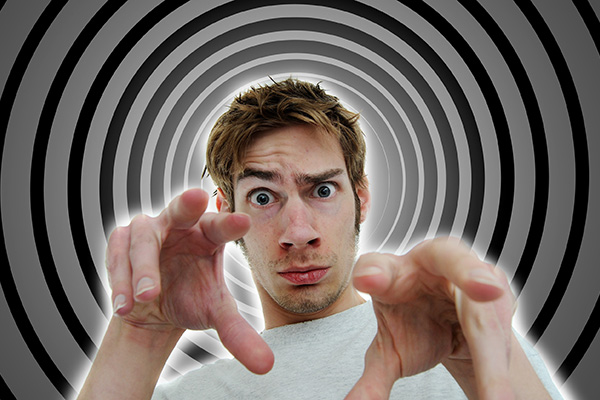The remarkable strength of forgiveness: Journeying from bitterness to brilliance
 As a teacher of Kundalini yoga, my perspective on forgiveness extends beyond mere compassion or kindness. It is a sacred healing journey — a fundamental release and transformation of the toxic energy stored within the subtle body.
As a teacher of Kundalini yoga, my perspective on forgiveness extends beyond mere compassion or kindness. It is a sacred healing journey — a fundamental release and transformation of the toxic energy stored within the subtle body.
My experiences as a Reiki healer and psychic reader have enhanced my grasp of this notion. I’ve observed how unresolved emotional anguish, bitterness, and resentment can cause blockages in our energy channels, dulling our vibrancy and hindering our intuitive skills.
Throughout both healing sessions and psychic readings, I’ve noticed forgiveness catalyzing significant changes in individuals’ physical, mental, emotional, and spiritual health.
Within the Kundalini Yoga framework, forgiveness transcends being just a moral principle. It represents a deep energetic cleansing. Holding onto feelings of resentment, anger, or betrayal creates heavy energy imprints, or emotional residues, in our aura and chakras, particularly near the heart center (Anahata). Such blockages hinder the flow of prana, dull our intuitive insights, and restrict our ability to experience divine love.
My yoga mentor, Yogi Bhajan, frequently emphasized that the quickest path to healing and joy is through complete and unlimited forgiveness. He taught us that genuine forgiveness necessitates letting go of the subconscious “recordings” and emotional patterns engraved in both sides of the brain — patterns that replay suffering and perpetuate karmic cycles. “Forgive, release, learn, love, and thrive,” he would encourage.
To forgive is the highest, most beautiful form of love. In return, you will receive untold peace and happiness ~ Robert Muller
The Sanskrit word kṣamā, which translates to “forgiveness,” is honored among many yogic traditions as a crucial virtue. In Kundalini yoga, forgiveness is not just a moral yama; it embodies a daily practice that fosters patience, compassion, and release towards both oneself and others.
Forgiveness in Kundalini Yoga also serves as a method of karmic purification. It liberates us from vasanas and samskaras—the dormant tendencies and karmic marks from past experiences that influence our actions and perceptions. Certain practices, like “unloading the subconscious,” aim to bring forth and clear these hidden impressions. The objective is to cleanse the psyche, revitalize the heart, and elevate the soul towards spiritual awakening.
Forgiveness Is Essential For Healing
This is why forgiveness is practiced with intention, mantra, pranayama, kriya, and meditation. Yogi Bhajan stressed its importance for genuine healing throughout his teachings. Without forgiveness, the Kundalini energy cannot ascend freely through the central channel (sushumna). The heart remains tight, the mind anxious, and the soul encumbered.
Numerous Kundalini instructors lead students through forgiveness meditations that emphasize posture, breath, and sound, often employing the mantra Sat Nam to ground the practice. These meditations serve as energetic resets, guiding us back to the heart whenever resentment arises.
Over the years of working with students and clients, I’ve observed how forgiveness softens the heart, calms the mind, and opens the energetic body to profound awakening. It invites the Kundalini to ascend smoothly and brilliantly.
Nevertheless, I have also realized that genuine forgiveness cannot be hurried. It blossoms when we are prepared to transcend our wounds and acknowledge the soul’s truth: we are all here to learn, grow, and evolve through each other’s reflections.
In Reiki sessions, unresolved trauma and complaints frequently appear as dark, heavy stagnation surrounding the heart and solar plexus chakras. Yet, when the intention to forgive is consciously held, I see that energy start to lift, lighten, and disperse.
In the same vein, unhealed resentment can emerge as fractured timelines or shadowy facets of the inner child during psychic readings, yearning for reintegration. Repeatedly, these revelations affirm the beautiful teachings of Kundalini Yoga: forgiveness is not a passive act. Instead, it is a deliberate and brave endeavor of energetic healing and self-liberation.
When you hold resentment toward another, you are bound to that person or condition by an emotional link that is stronger than steel. Forgiveness is the only way to dissolve that link and achieve freedom ~ Catherine Ponder
The Bridge Of Light: A Forgiveness Meditation
A potent technique for forgiveness work is visualized meditation. I created a forgiveness meditation for my sessions that unfolds Kundalini Yoga teachings with visualization and heart-centered intention.
After engaging in this meditation, my students often express that they feel a sense of lightness or can now approach previously difficult individuals with greater tolerance, compassion, or even love. Below is a polished version of this meditation, refined through years of feedback and practice:
Sit in easy pose: Settle into a comfortable cross-legged position while keeping your spine erect and shoulders relaxed.
Commence eyebrow gazing. Softly close your eyes and roll them upward toward your third eye, situated between your brows. Direct your gaze inward and slightly upward. This action stimulates the pituitary gland and heightens intuitive awareness.
Activate healing energy in your hands. Friction your hands together rapidly to generate warmth and activate prana, or life force energy. Then, rest your left hand over your heart center, placing your right hand gently on top.
Start taking long, deep breaths. Breathe in slowly and completely through your nose, filling your lungs fully. Exhale consciously to release tension and stagnant energy from your body.
Visualize a joyful, healing environment. Imagine yourself seated beside a tranquil, gentle creek in a serene and stunning natural landscape. Listen to the soft murmur of the water and the birds chirping. Feel the warm sunlight and gentle breeze against your skin.
Witness the wrongdoers. Across the peaceful, sparkling creek, visualize everyone who has ever wronged you — those who have deceived you, betrayed you, harmed you, or abandoned you. Take your time. Simply observe their presence with detached compassion.
Extend a healing bridge of light. Now, visualize a glowing bridge of healing light stretching across the creek. Rise in your mind’s eye and position yourself at the entrance of the bridge on your side.
Receive their soul apology. Allow each person to cross the bridge one by one. Listen as they convey a heartfelt and sincere apology from their higher self.
Forgive and release them. Accept their apology and acknowledge its soul-level truth. Embrace them with compassion. Then, gently let them go and allow them to continue on their path. Feel your energy become lighter with each release.
Rebalance your heart center. Once everyone has departed, bring your focus back to your heart. Visualize a radiant emerald green light, the healing hue of the heart chakra, filling and expanding within your chest. Let it shine with every breath.
Affirm your freedom. Quietly affirm, “I forgive. I release. I am free.” Let each statement reinforce your emotional liberation and energetic clarity.
Integrate and conclude. Remain in tranquil stillness for a few moments to allow your energy field to harmonize. When you feel prepared, gently open your eyes and return to the present moment, sensing grounded and light.
You can engage in this meditation as often as needed. With each session, another layer of resistance will peel away and a further karmic thread will be unraveled. Over time, your emotional energy field will grow clearer, your heart will open wider, and your intuition will become more attuned.
Always remember that forgiveness is not merely a gift for others. It signifies the sacred act of reclaiming your own energy, joy, and well-being. By choosing forgiveness, you align with your highest self and allow the divine to flow through you effortlessly and graciously.
May your journey be radiant, your heart unburdened, and your soul empowered in peace, acceptance, and divine truth.
|
Satya resides in Northern California and is a natural Clairvoyant, Empath, Conduit, educator, author, animal enthusiast, healer, Reiki Master, and an advanced yoga instructor. She has offered invaluable psychic guidance to Hollywood stars, athletes, and everyone in between. A multi-dimensional Intuitive, equipped with many unique gifts, she is able to provide a glimpse into the past as well as a pathway to a joyful future. Through her distant energy work, she offers healing to both humans and animals! She effortlessly identifies karmic ties from past lives that directly influence current situations, aiding clients in moving through them swiftly. For accurate solutions to nearly any pressing challenge, you can discover Satya at PsychicAccess.com. |
Forgiveness serves as a potent instrument capable of profoundly altering our lives. It involves releasing feelings of resentment, anger, and bitterness towards those who have wronged us and choosing to free ourselves from the weight of maintaining negative emotions. By forgiving, we transition from a place of darkness and resentment to a one filled with light and brightness.
Resentment is a burdensome load to carry. It can drag us down, obscure our clarity, and hinder our capacity to experience genuine happiness and tranquility. When we cling to resentment, we permit the actions of others to dominate us, trapping us in a cycle of negativity and suffering. However, by opting to forgive, we can escape this cycle and make ourselves available to numerous opportunities.
Forgiveness is not necessarily effortless. It compels us to relinquish our ego, our desire for revenge, and our urge to hold onto past wounds. It requires vulnerability and a willingness to risk further hurt. Nevertheless, the benefits of forgiveness far surpass the hazards. By forgiving, we liberate ourselves from negativity’s grip and venture towards tranquility and healing.
Forgiveness possesses the ability to transform our relationships, both with others and ourselves. When we pardon someone who has caused us pain, we can release the anger and resentment that have been toxic to our relationship. We can perceive the other individual through a compassionate lens, with greater understanding, enabling us to advance with renewed connection and trust.
Furthermore, forgiveness can reshape our internal world. When we forgive, we release the burden of old pains and injuries. We are able to put aside negative feelings that have held us back from fully embracing joy and fulfillment. Through forgiveness, we transition from darkness to light, from resentment to brilliance.
In summary, forgiveness is a powerful force with the capacity to effect significant change in our lives. It enables us to let go of resentment’s weight and shifts us towards peace and healing. It can alter our relationships with others and ourselves and introduces us to an array of possibilities. Therefore, relinquish the past, liberate yourself from negativity’s grasp, and journey toward a place of light and brightness through forgiveness’s transformative power. Continue reading















